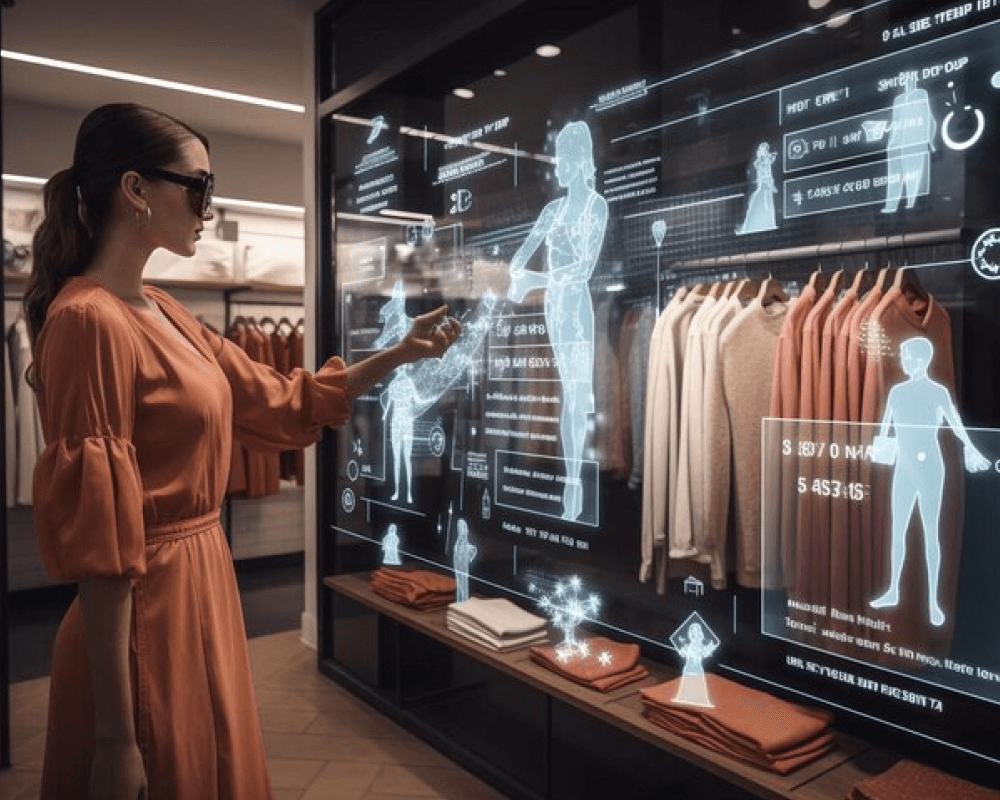February 8, 2024 By: Sreenivasa Sunkari
Retail analytics is key to understanding and predicting customer needs, which is increasingly important in today’s hyper-personalized retail environment. As consumer expectations continue to rise, driven by experiences with e-commerce leaders and innovative Direct-To-Consumer start-ups, the ability to deliver tailored offerings becomes paramount. A remarkable 44% of consumers are willing to shift their business if they have yet to receive the personalized experience they’ve grown accustomed to.
Retail analytics can help address this by gathering and analyzing customer data to create personalized shopping experiences. This not only boosts customer retention and loyalty but can also significantly increase revenue. A McKinsey & Company report highlighted that companies excelling at hyper-personalization saw a substantial 40% revenue increase compared to slower-growing competitors.
Therefore, leveraging retail analytics for hyper-personalization can pave the way for more effective retail personalization solutions, combining data sciences, advanced analytics, and customer experience design to create a unique omnichannel experience for each customer.
Understanding Customer Behavior
Understanding customer behavior, analyzing purchasing patterns, tracking customer interactions, and studying market trends are fundamental aspects of effective business strategy. These elements allow companies to create customer profiles, identify customer needs and preferences, and predict future trends. For example, big data analytics can illuminate purchasing patterns and track customer interactions. Amazon, a global e-commerce giant, uses such data effectively to suggest products based on a customer’s browsing history, past purchases, and items left in the shopping cart. This personalized approach has seen a significant increase in sales, proving the efficacy of understanding customer behavior. In fact, Amazon’s recommendation engine generates 35% of its revenue. Even slight enhancements to this engine can result in substantial dividends.
By analyzing purchasing patterns, a business can determine what products are popular among different customer segments and at what times. Tracking customer interactions, on the other hand, helps to improve customer service and strengthen customer relationships.
For example, Market studies show Netflix’s home dashboard is personalized for each user based on their data-driven preferences. This has led to a remarkably low churn rate and exceptional customer retention. Additionally, Netflix studies viewing patterns to understand market trends and customer preferences. By analyzing more than 75 million subscribers’ viewing behavior, Netflix found that 70% of viewers watch television series episode after episode. This understanding led to the production of more binge-worthy content, catering to customer preferences and thus increasing viewer engagement substantially.
Studying market trends and consumer behavior provides insight into industry movements, competitor strategies, and potential opportunities for growth or innovation. These combined insights arm businesses with the knowledge to make informed decisions, tailor their offerings, and ultimately enhance customer satisfaction and loyalty.
Personalizing Customer Experience
Retail Analytics is revolutionizing the retail sector through its power to deliver hyper-personalized solutions. Leveraging Hyperautomation in Retail, retailers are now able to offer a highly personalized customer experience, which is achieved by understanding individual customer behavior, preferences, and buying patterns. In fact, companies like JK Tech are at the forefront of providing such hyperautomation solutions for retail.
Through Price Optimization for Retailers, retailers can adopt dynamic pricing and offers, ensuring the right price at the right time for the right customer. This is made possible by Retail Price Management systems and price recommendation solutions that utilize predictive analytics to determine optimal pricing strategies.
Demand forecasting in Retail plays a pivotal role in supply chain optimization. Retail Demand Forecasting tools, like those offered by JK Tech, use advanced algorithms to predict future demand, enabling retailers to plan their inventory and logistics efficiently. These demand forecasting solutions for the supply chain provide the backbone for Demand Planning & Optimization, ensuring that retailers can meet customer demand at all times.
Hyper-personalization in Retail goes beyond just product recommendations. It extends to in-store personalization, creating a truly bespoke shopping experience for each customer. Retail personalization solutions, provided by JK Tech, use predictive analytics to create highly targeted marketing strategies that increase customer engagement.
JK Tech further enhances its retail solutions with its Customer Value Management (CVM). It uses intelligent solutions to connect stores and supply chains, creating a seamless shopping experience for customers. JK Tech’s Supply Chain Optimization solutions ensure that retailers have the right products, at the right place, at the right time, ensuring maximum customer satisfaction and sales. With its Demand Forecasting solutions, it stays one step ahead, predicting future sales trends and adjusting its strategies accordingly.
Future of Retail Analytics
The future of retail analytics is set for transformation, driven by emerging trends and innovations. The integration of predictive analytics, data visualization, and machine learning will provide businesses with valuable insights for decision-making. This empowers retailers to personalize customer experiences, optimize inventory management, and enhance operational efficiency, leading to data-driven growth and profitability.
The significance of adaptability and forward-thinking is underscored in this new chapter of retail analytics, highlighting the importance of thriving in today’s rapidly evolving marketplace.



